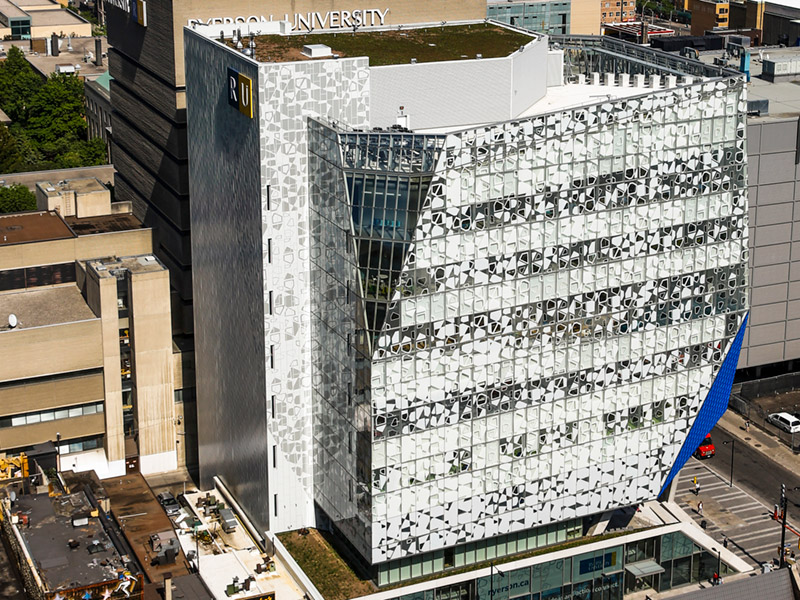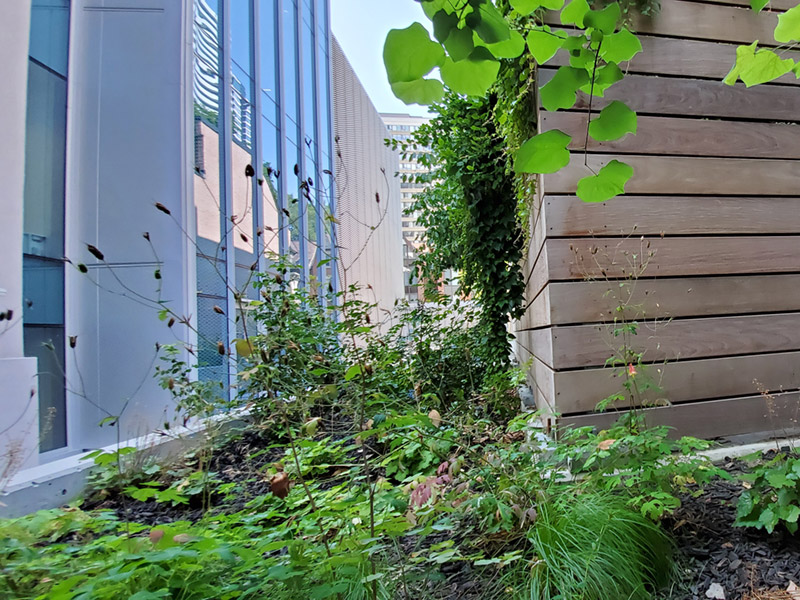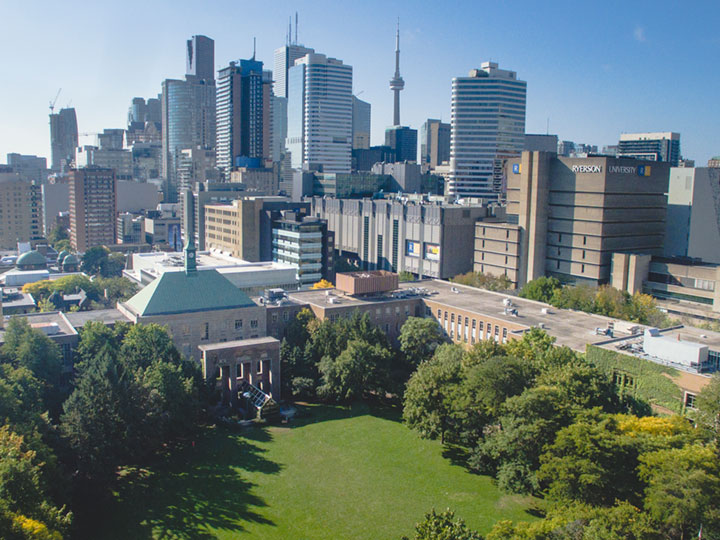Water

Toronto Metropolitan University is committed to employing technologies and encouraging behaviours that minimize water waste. We measure our water usage and work to reduce water consumption through environmentally sustainable practices.
TMU’s Sustainability Office tracks water consumption through the analysis of monthly utility bills. Water consumption decreased by approximately 3% in 2021/2022 and 53% since the 2019/2020 academic year. The spike in water consumption in 2019/2020 was the result of issues with our campus steam distribution network and the condensate return system, which have since been fixed. Domestic water consumption also saw a decrease over the past two years as a result of the absence of activity on campus due to the COVID-19 pandemic.
Annual water consumption

This bar graph shows TMU's annual water consumption from 2014 to 2022 measured in m3 (cubic metres).
| Fiscal Year | Water Consumption (Volume - m3) |
|---|---|
| 2014/2015 | 208,738 |
| 2015/2016 | 278,950 |
| 2016/2017 | 331,118 |
| 2017/2018 | 305,023 |
| 2018/2019 | 322,424 |
| 2019/2020 | 413,134 |
| 2020-2021 | 246,563 |
| 2021-2022 | 251,824 |
| 2022-2023 | 338,684 |
| 2023-2024 | 340,622 |

Grey water collection system
Two buildings on campus, the Sheldon and Tracy Levy Student Learning Centre (SLC) and the Daphne Cockwell Health Sciences Complex (DCC), make use of grey water collection systems; water collected from showers, taps and rain is treated and used to flush toilets. The grey water system has metering hardware to measure the quantity of both storm water and grey water collected for treatment. A meter is also in place to measure how much treated grey water is used to offset city water. Such design features are also being considered for new buildings on campus that are currently in the design phase.

Water-efficient landscaping
Stormwater management is an important part of Facilities’ sustainability action plan which is accomplished by designing water efficient landscaping. By managing the stormwater locally, TMU helps the City of Toronto (external link) with their management, which translates into significant environmental benefits. Vegetated landscaping and roofs help with stormwater management by reducing the runoff and absorbing most of it, before it gets to the city sewers. Vegetated roofs exist on the Centre for Urban Innovation (CUI), DCC, George Vari Engineering and Computing Centre (ENG) and SLC.
The DCC and CUI buildings also include stormwater capture that collects rainwater and stores it in a cistern. The accumulated rainwater is the primary source of irrigation for the CUI and DCC green roofs.
Water efficient landscaping also contributes to reducing heat island effects and buildings’ cooling requirements.
In the case of the Campus Core Revitalization project, the landscaping uses underground cells that are an integrated tree and stormwater system. They capture and retain stormwater in a matrix that emulates a tree-root structure. This creates a bioretention system that facilitates natural filtration, storage and recharge of stormwater runoff that enters the system through permeable pavers or drainage systems.
The cells can hold significant amounts of uncompacted soil while still providing the structural support required for the surfaces above (they are strong enough to support a roadway). The expanded soil volumes within the structural framework create conditions that are very similar to those of a heavy growth forest, which is particularly beneficial to urban trees which otherwise are often planted in concrete boxes that limit their root expansion.
Read more about Silva Cells and how they work (external link) .

Protection of potable water
Each year, the facilities team completes testing of backflow preventers (devices in place to avoid contaminating potable water in water mains. The campus also has 39 premise isolation devices that fall under The City of Toronto BackFlow Prevention Program, which the university tests annually, with results sent to the city.
Additional TMU initiatives
Urban Farm at TMU
The Urban Farm at TMU atop the ENG building and DCC’s roof also helps with capturing rainwater and reducing stormwater runoff by nature of design and function. Plus they produce organic vegetables that are sold to the community!
Urban Water Research Centre
A multi-disciplinary collective of over 40 experts working on water capture strategies to ensure the development of resilient sustainable cities.